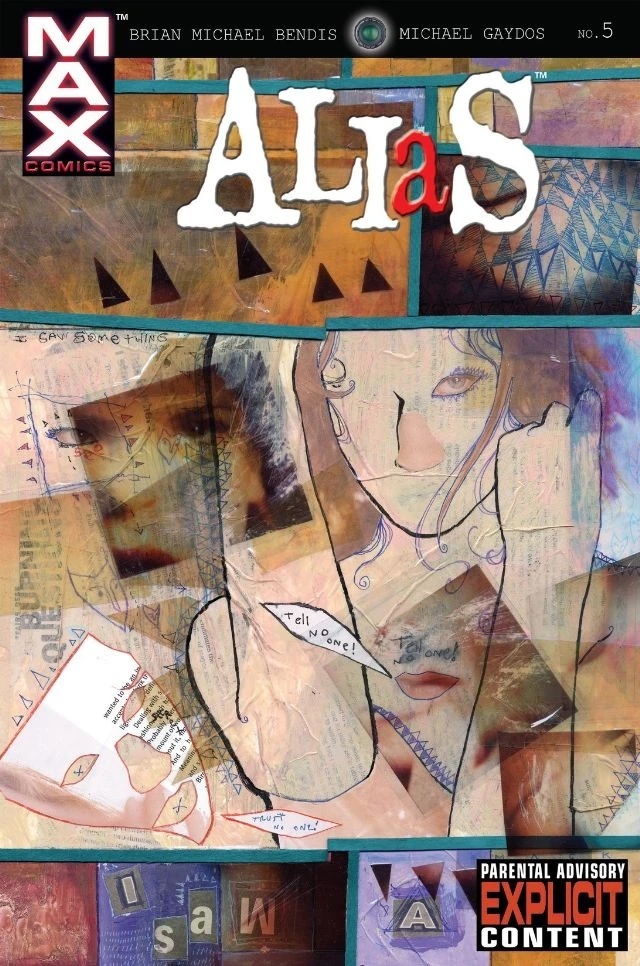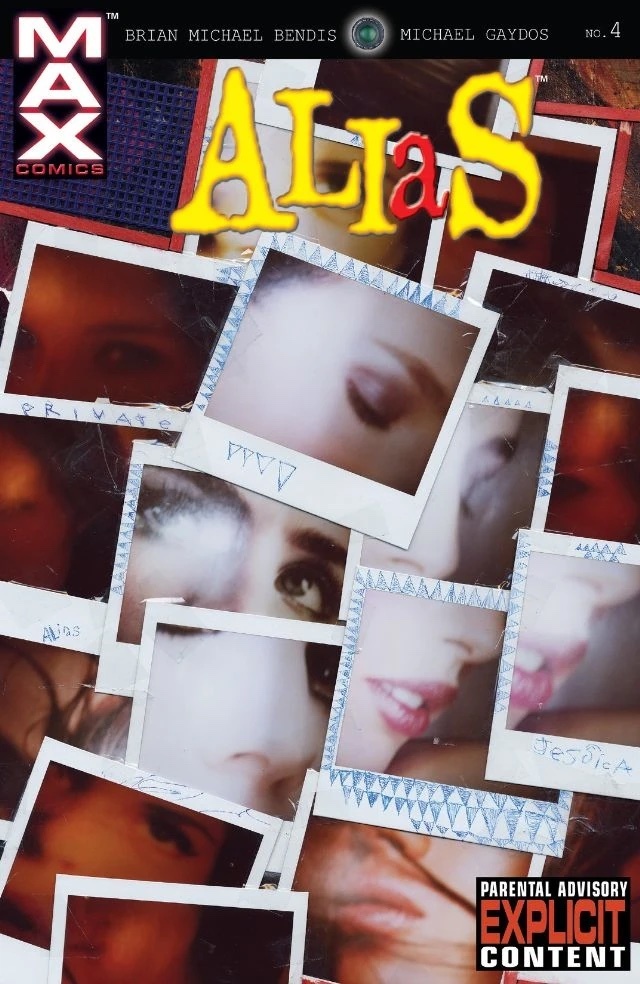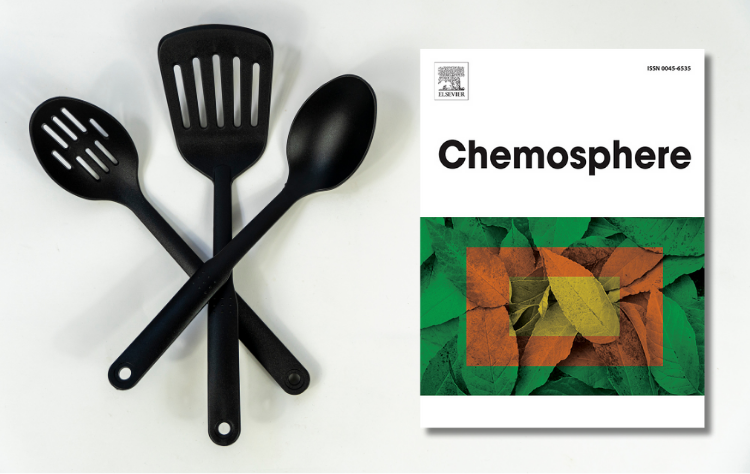2. I'm really enjoying Mario Kart World. And just ten more days until the new Donkey Kong game, which looks like it will be amazing!
3. Molly is demonstrating the proper way to help at the computer.

Just as a Harvard lab brought in tens of millions of dollars in private equity funding to pursue new treatments for obesity, past research from its lead investigator has come under fresh scrutiny.
Last month, the lab of Gökhan Hotamışlıgil, a professor of genetics and metabolism at Harvard’s T.H. Chan School of Public Health, secured a $39 million dollar investment from İş Private Equity, an Istanbul-based firm. The partnership centers on FABP4, a protein associated with obesity and other metabolic conditions.
But over the past decades, two of Hotamışlıgil’s papers have been corrected for image duplications, and since the announcement, renewed scrutiny of Hotamışlıgil’s work appeared on PubPeer, including for issues with statistical analyses.
“Of course when we become aware of an irregularity or mistake, or someone makes an allegation, we take these issues very seriously and do all we can to address the question,” Hotamışlıgil told us in an email.
The most recent comments are from Reese Richardson, a computational biologist who looks into scientific reproducibility. Richardson said he became curious about Hotamışlıgil’s work after seeing news about the funding deal. He soon found existing concerns flagged on PubPeer.
“I figured that it would be worthwhile to check his papers out,” Richardson told us. Initially, two articles piqued his interest, although Hotamışlıgil is not the senior author on either.
In one PubPeer post, Richardson raised concerns about a 2017 paper in Nature Medicine in which he discovered mislabelling of data, claims of statistical significance the raw data didn’t seem to support, and some missing source data. The author contribution statement indicates Hotamışlıgil oversaw some of the experiments.
Richardson also looked into a 2019 article in Cell Metabolism that contained “either wrongly reported or apparently manipulated” statistics, he told us. Nearly every result “features inexplicable methodological inconsistencies or reporting errors,” he wrote on PubPeer. “These result in a massive exaggeration of the effects observed.”
According to Richardson’s analysis, some statements made in the paper were true only when samples were arbitrarily excluded, but the methods didn’t describe any procedure for the exclusion of samples. According to the author contribution statement, Hotamışlıgil helped with the discussion and interpretation of results.
James Heathers, a scientific sleuth and director of the Medical Evidence Project — an initiative of the Center for Scientific Integrity, the parent nonprofit of Retraction Watch — said the extent of the problem is mostly unknowable. “How can you adjust for the effects of data that isn’t presented?” If outliers are left in the dataset, but redacted from the analysis, “the redaction should be explained in 100% of cases,” he said.
Hotamışlıgil said the work for those two papers was led by Yu-Hua Tseng, another researcher at Harvard, and his group’s involvement was limited. “We have provided some help with their experiments, my fellow Alex Bartelt provided some training and physiology and biochemistry experiments,” he told us. “We were not directly involved with the rest of the paper.”
Apart from Richardson’s recent comments, anonymous commenters on PubPeer have pointed out irregularities in Hotamışlıgil’s published work over the years. A 2008 PLOS One paper, for example, was corrected after a commenter found a duplicated image. A similar issue was flagged in a 2020 paper in Cell Metabolism, which included two identical images in one figure. “We deeply regret this unfortunate error,” one of the authors wrote on PubPeer. That paper was also corrected. Another flagged paper appears to contain similar-looking blots. Hotamışlıgil is listed as the senior and corresponding author on each of these papers.
For a 2019 article in Science Translational Medicine related to FABP4 — the protein at the center of the new funding deal — an anonymous commenter questioned the statistical significance of the findings. After analysing the raw data, the commenter found no statistical significance for some findings reported in the paper, despite them having been reported as such. Hotamışlıgil was the senior and corresponding author for this paper. Heathers said these statistical concerns comprised “a concerning pattern of oversights” and would “necessitate exactly the kind of audit that universities tend not to do.”
Reflecting on the PubPeer posts appearing under his name, Hotamışlıgil said, “In many cases, there is no basis, for example there are several posts where there is no comment, there is even one post about a review that I have written but nothing can be found at the post, and some state opinions or perceptions.”
Hotamışlıgil also co-authored a 2002 Nature paper with Michael Karin, a prominent cancer researcher and the subject of previous scrutiny for image problems, including in our own reporting. The paper was corrected in 2023 after PubPeer commenters identified duplicated blots. In the correction, the editors wrote: “as the raw data for the blots used in the manuscript are no longer available, unfortunately we cannot ascertain the issue with the figure.” Hotamışlıgil was listed as the senior and corresponding author on this paper.
He has also co-authored papers with Umut Ozcan, who in 2015 was accused by postdocs of fabricating data and creating a hostile work environment. The case was dismissed from court in 2018. Hotamışlıgil was Ozcan’s graduate advisor, and the two articles where Hotamışlıgil is listed as the senior and corresponding author, and Ozcan as the first, appear to contain duplicate lanes in the blot data or have a mismatched number of lanes. Mike Rossner, an image manipulation consultant, said these PubPeer allegations also had merit, although the mismatched lanes could be a clerical error, which is “unusual, but not unheard of,” he added.
Harvard has described the Turkish firm’s partnership with Hotamışlıgil’s lab as a “potential model” for revenue for the T.H. Chan School. According to a press release about the funding, the school has seen almost $200 million in federal funding dry up in recent months, and the Trump administration terminated nearly every direct federal grant for research and training. The deal was in progress before the administration came into office, and would have taken place despite the recent decline in federal funding, a Harvard spokesperson told us.
Iş Private Equity is currently the only private equity funder at the T.H. Chan School, although the school is “accelerating” efforts to engage with the private sector, the spokesperson said.
Such arrangements between universities and private equity are “not common,” Robert Field, a professor of law and public health at Drexel University in Philadelphia, told us. In recent years, private equity has been moving into health care — buying up hospitals, nursing homes and physician practices — but investing into universities is unusual. Private equity is “by nature, profit oriented, and usually short-term profit oriented,” Field said, and are most likely to fund projects that are close to fruition, he said.
The research has the same oversight, regardless of the funding source, said the Harvard spokesperson, and they will not accept collaboration that “imposes any restriction on our faculty’s freedom to publish and speak about their research.”
Richardson told us he shifted his focus to Tseng, who was the senior author on the two recently flagged papers. Richardson came across a different pair of 20-year-old papers she was the lead author on, both of which seem to contain similarities between parts of Western blots, or inconsistent features in the blot lanes.
Rossner told us the allegations about image duplications had merit and the data raise enough concerns for a journal editor to want to verify the published results. Some of the PubPeer comments note mismatched lanes in the Western blots; this could be due to clerical error, Rossner said, and one image was too low resolution to tell whether it could be a duplicate.
Richardson has also since raised concerns about several other papers by Tseng, citing statistical irregularities.
Tseng told us she is aware of the comments and has “already discussed them with the leading authors.” Since speaking with Retraction Watch, she has responded on the platform, writing, “Thank you for your comments. We are currently reviewing the original data and conducting additional analysis. We will respond to the comments once the investigation is complete.”
Like Retraction Watch? You can make a tax-deductible contribution to support our work, follow us on X or Bluesky, like us on Facebook, follow us on LinkedIn, add us to your RSS reader, or subscribe to our daily digest. If you find a retraction that’s not in our database, you can let us know here. For comments or feedback, email us at team@retractionwatch.com.
Writer: Bill Mantlo
Pencils and inks: Sal Buscema
Back on Earth, Rom encounters some more old friends. Or so he thinks...
( Read more... )
Writer: Chuck Dixon
Pencils: Tom Lyle
Inks: Bob Smith
Robin and King Snake duke it out. Also, he should probably do something about that plague bomb as well.
( Read more... )
Writer: Dennis O’Neil
Pencils: Ric Estrada
Inks: Wally Wood
Dr. Moon and Shit Tie get their henchmen hopped up on steroids and send them to kill Richard Dragon.
( Read more... )
Writer: Dennis O’Neil
Pencils: Denys Cowan
Inks: Rick Magyar
The Question comes to the aid of a mobster who was raised by wolves.
( Read more... )
2. Back to work tomorrow. :( Thinking of maybe making it a WFH day, though. So far the only meeting-like things I have are two web interviews, so that can be done from home, and I've got a lot of desk work and email to catch up on from the three-day weekend. So if no one comes up with anything urgent that needs me in person I think I'll stay home.
3. Tuxie is so handsome!

Ghost Quartet is a band: Dave Malloy on keyboard, Brent Arnold on cello, Gelsey Bell and Brittain Ashford on various instruments, and everyone providing vocals. Ghost Quartet is a song cycle, a concert album performed semi-staged, a mash-up of "Snow White, Rose Red," The One Thousand and One Nights, the Noh play Matsukaze, "Cruel Sister", "The Fall of the House of Usher", the front page photo of a fatal train accident, and a grab bag of Twilight Zone episodes. The ghost of Thelonious Monk is sometimes invoked, but does not appear; whisky is often invoked, and, if you see the show live, will most certainly appear. "I'm confused/And more than a little frightened," says (one incarnation of) the (more-or-less) protagonist. "It's okay, my dear," her sister/lover/mother/daughter/deuteragonist reassures her, "this is a circular story."
Once upon a time two sisters fell in love with an astronomer who lived in a tree. He seduced Rose, the younger, then stole her work ("for a prestigious astronomy journal"), and then abandoned her for her sister, Pearl. Rose asked a bear to maul the astronomer in revenge, but the bear first demanded a pot of honey, a piece of stardust, a secret baptism, and a photograph of a ghost. (The music is a direct quote of the list of spell ingredients from Into the Woods.) Rose searches for all these ingredients through multiple lifetimes; and that's the plot.
Except it is much less comprehensible than that. The songs are nested in each other like Scheherazade's stories; you can follow from one song to the next, but retracing the connections in memory is impossible; this is less a narrative than a maze. Surreal timelines crash together in atonal cacophany; one moment Dave Malloy, or a nameless astronomer played by Dave Malloy, or Dave Malloy playing Dave Malloy is trying to solve epistemology and another moment the entire house of Usher, or all the actors, are telling you about their favorite whiskies. The climax is a subway accident we have glimpsed before, in aftermath, in full, circling around it, a trauma and a terror that cannot be faced directly; the crash is the fall of a house is the failure to act is the failure to look is the failure to look away.
There are two recordings available. Ghost Quartet, recorded in a studio, has cleaner audio, but Live at the McKitterick includes more of the interstitial scenes and feels more like the performance.
In Greenwood Cemetery, there were three slightly raised stages separated by batches of folding chairs, one for Dave Malloy, one for Brent Arnold, and one for Gelsey Bell and Brittain Ashford, with a flat patch of grass in the center across which they sang to each other, and into which they sometimes moved; you could sit in the chairs, or on cushions in front of the first row, or with cheaper tickets you could sit in the grass on the very low hills above the staging area, among the monuments and gravestones, and, presumably, among more ghosts. The show started a little before sunset; I saw a hawk fly over, and I could hear birds singing along when the humans sang a capella. It was in the middle of Brooklyn, so even after dark I couldn't see stars; but fireflies sparked everywhere.
Writer: Chris Claremont
Pencils and inks: Bill Sienkiewicz
Moira is having trouble with a patient, so she calls on Professor Xavier to help.
( Read more... )
- My favourite Glasto quote was from Seun Kuti: "I know you want to free Palestine, free Congo, free Sudan, free Iran. It’s a new one every week. Free Europe. Free Europe from right-wing extremism, from fascism, from racism. Free Europe from imperialism."
- Hearing: earlier this week there was either a school sports day in the field out the back of my house or a fantastical battle between children and dogs. The next day there was either another sporting event further along the valley or an epic battle between cows and sheep. Or my hearing is going, or the valley has rly weird acoustics when the rocks are hot and the earth is dry.
- Secondhand bookmarker: a handwritten note, on an individually dyed sheet of paper, fell out of a used book I bought. It was from Grandma N to Dear Farly to thank the "very kind boy" for sharing his "special eggs" from his own chickens and "they must be very happy to be living in your garden now after their sad life before".
( Birb, Health, blah blah )
The authors of a paper that went viral with attention-grabbing headlines urging people to throw out their black plastic kitchen tools have corrected the work for a second time.
But a letter accompanying the correction suggests the latest update still fails “to completely correct the math and methodological errors present in the study,” according to Mark Jones, an industrial chemist and consultant who has been following the case. “The errors are sufficient to warrant a restating of the abstract, sections of the paper and conclusions, if not a retraction.”
The paper, “From e-waste to living space: Flame retardants contaminating household items add to concern about plastic recycling,” originally appeared in Chemosphere in September. The study authors, from the advocacy group Toxic-Free Future and the Amsterdam Institute for Life and Environment at Vrije Universiteit Amsterdam, looked for the presence of flame retardants in certain household plastic items, including toys, food service trays and kitchen utensils.
The researchers found toxic flame retardants in several items that wouldn’t ordinarily need fire protection, such as sushi trays, vegetable peelers, slotted spoons and pasta servers. Those items, the authors suggested, could have been made from recycled electronics — which do contain flame retardants.
Then, for kitchen utensils, the authors used findings from another study, which measured how toxic chemicals including BDE-209 transfer from black plastic utensils into hot cooking oil, to estimate potential intake based on findings in their own study. They estimated a daily intake of 34,700 ng/day of BDE-209 from using contaminated utensils, which “would approach the U.S. BDE-209 reference dose” set by the Environmental Protection Agency, they reported.
But the authors miscalculated that reference dose. They had put it at 42,000 ng/day instead of 420,000 ng/day. That hiccup led to the first correction to the paper, published in December. “This calculation error does not affect the overall conclusion of the paper,” the authors said in the corrigendum.
The latest corrigendum, published July 3, states the formula the authors used to estimate exposure to the flame retardant BDE-209 “was misinterpreted.” It continues:
This misinterpretation led to an overestimation of the BDE-209 exposure concentration. The corrected estimated BDE-209 exposure is 7900 ng/day instead of 34,700 ng/day.
“While we regret the error, this is a correction in one exposure example in the discussion section of the study,” lead author Megan Liu of Toxic-Free Future told us by email. “The example was not part of the core research objectives or methods of the study.”
Jones, who spent his career at Dow Chemical, told us the second corrigendum is “inadequate and still incorrect.”
“If the error is sufficiently large to only provide context, the statement in the Conclusions that brominated flame retardants ‘significantly contaminate products’ no longer can be supported and must be corrected or retracted following the reasoning presented in the second corrigendum,” Jones wrote in a letter to the editor published with the second correction.
Jones took to task some of the calculations and other estimates Liu and colleagues made, which the authors refute in a response to Jones’ letter, also published in Chemosphere this week.
The Elsevier journal was delisted from Clarivate’s Web of Science in December for failing to meet editorial quality criteria. Last December an Elsevier spokesperson told us the publisher’s ethics team was“conducting in-depth investigations” of “potential breaches of Chemosphere’s publishing policies.” The journal had published more than 60 expressions of concern in 2024 and has retracted 34 articles so far this year.
Part of delisting means Clarivate no longer indexes the journal’s papers or counts its citations. Google Scholar shows seven citations to Liu’s paper, and Dimensions lists four scholarly citations.
Like Retraction Watch? You can make a tax-deductible contribution to support our work, follow us on X or Bluesky, like us on Facebook, follow us on LinkedIn, add us to your RSS reader, or subscribe to our daily digest. If you find a retraction that’s not in our database, you can let us know here. For comments or feedback, email us at team@retractionwatch.com.
Words and pencils: Jack Kirby
Inks: Mike Royer
Mister Miracle and Oberon stumble upon the lair of Madame Evil Eyes.
( Read more... )
Writer: Mark Waid
Pencils: Andy Kubert
Inks: Jesse Delperdang
The Plunderer sends the Rhino to take out Ka-Zar.
( Read more... )




